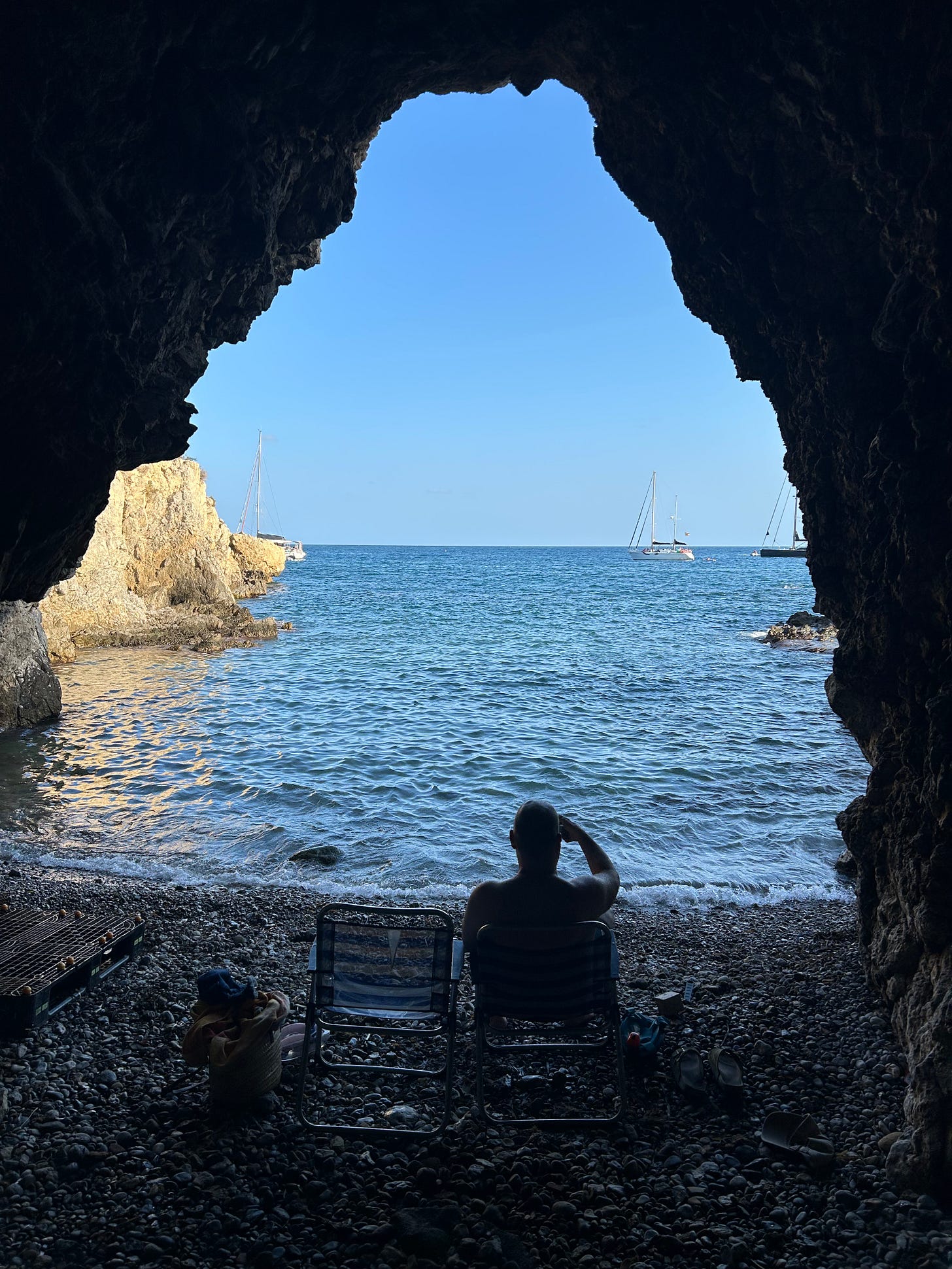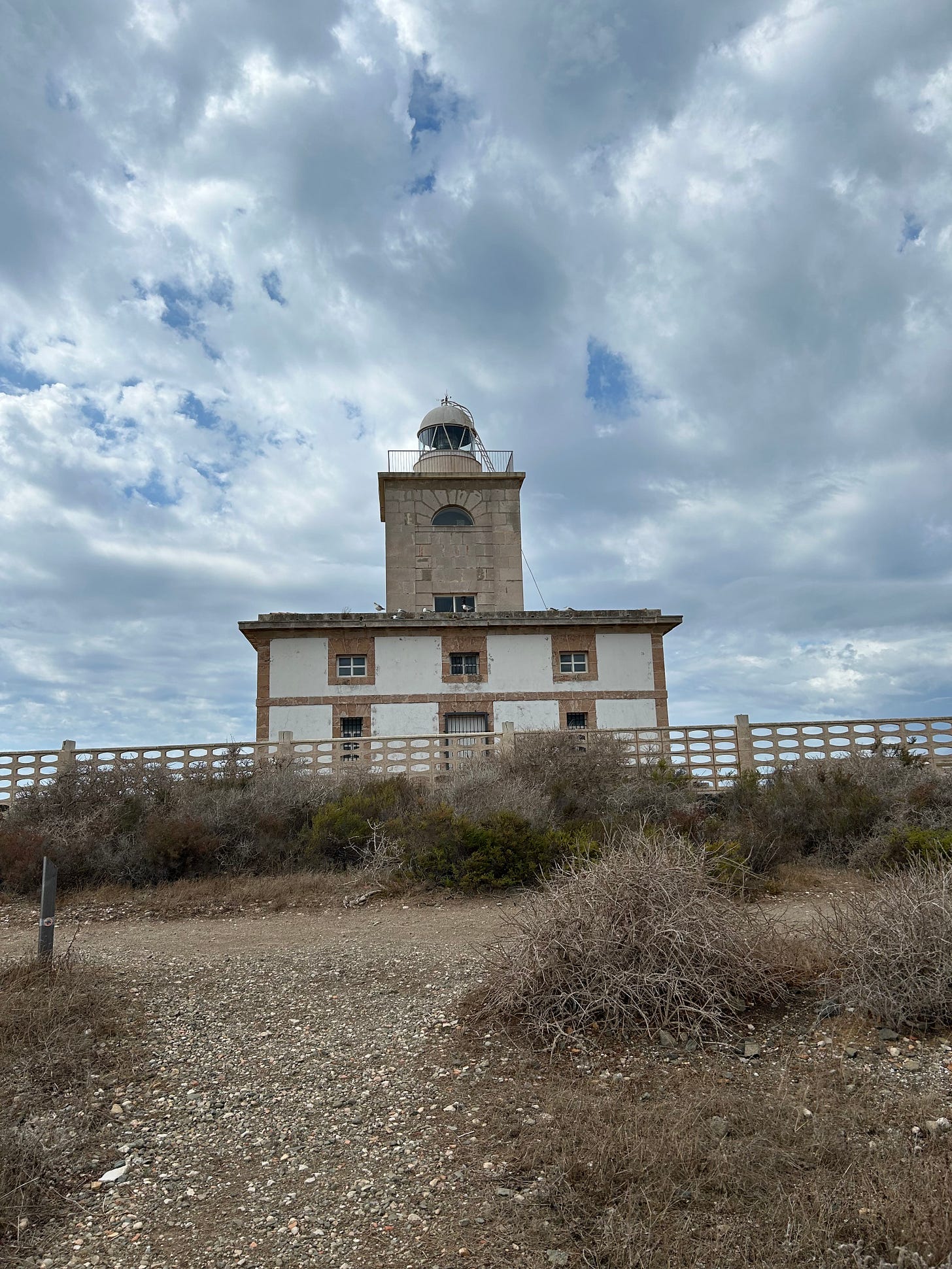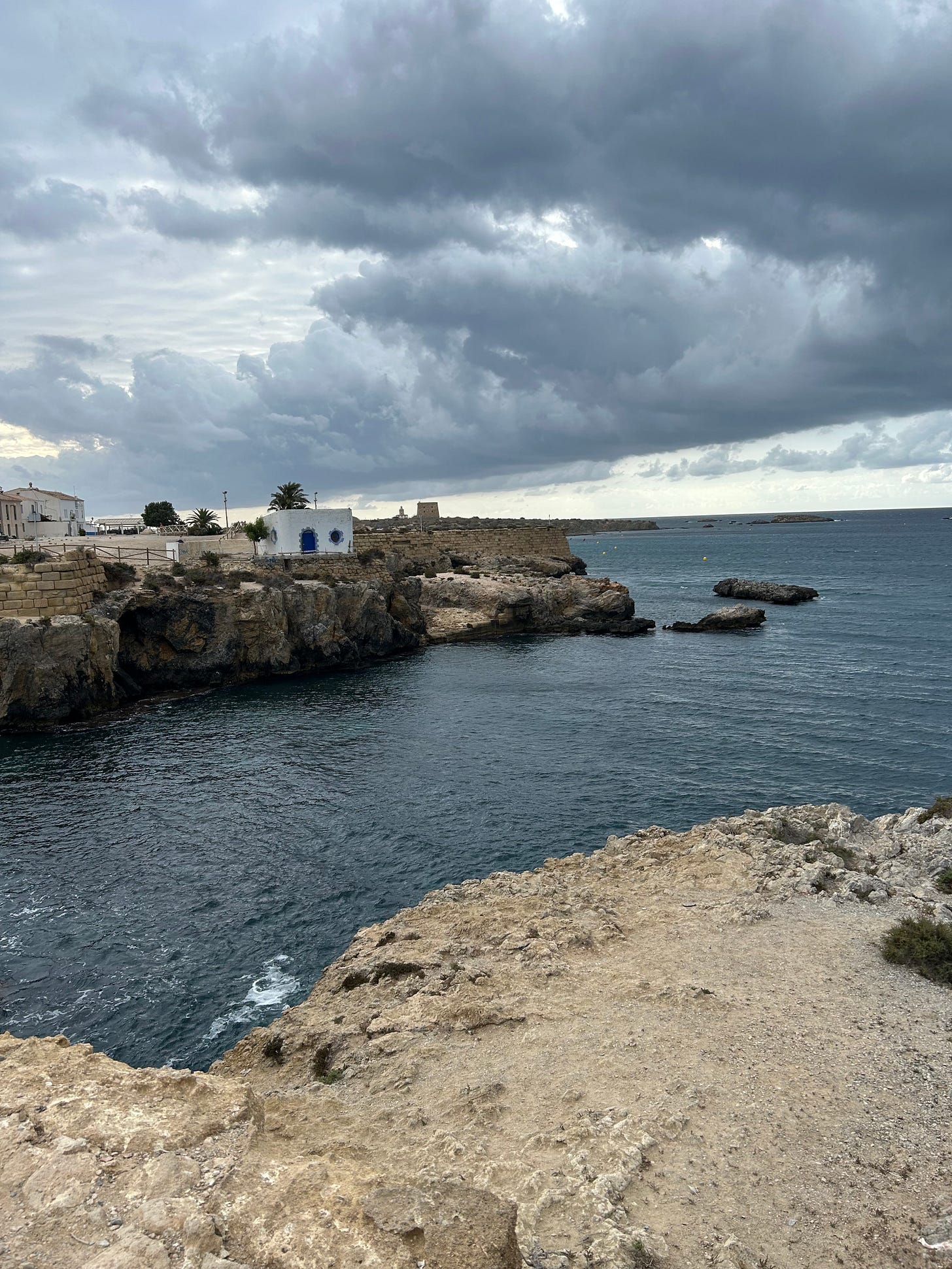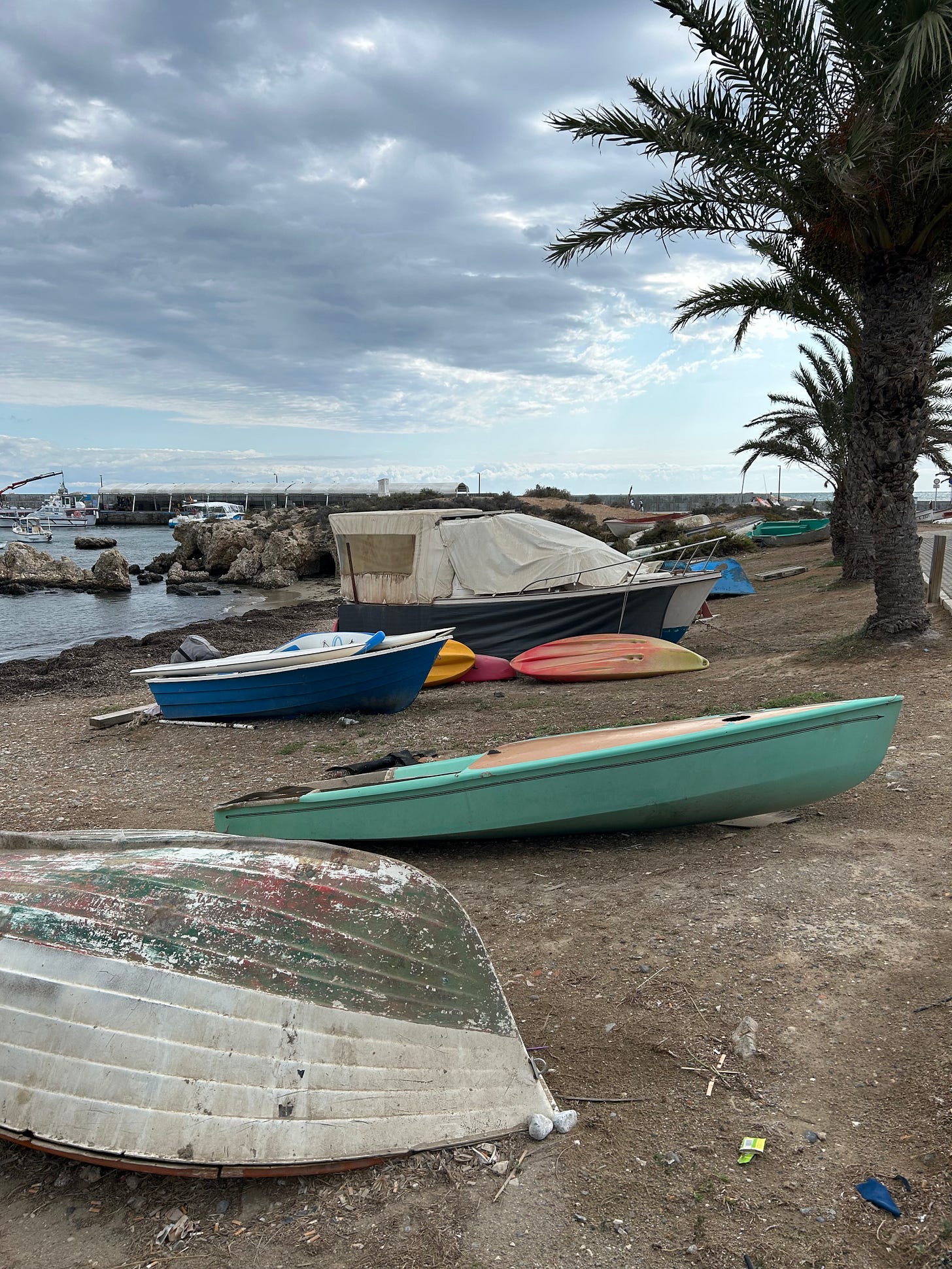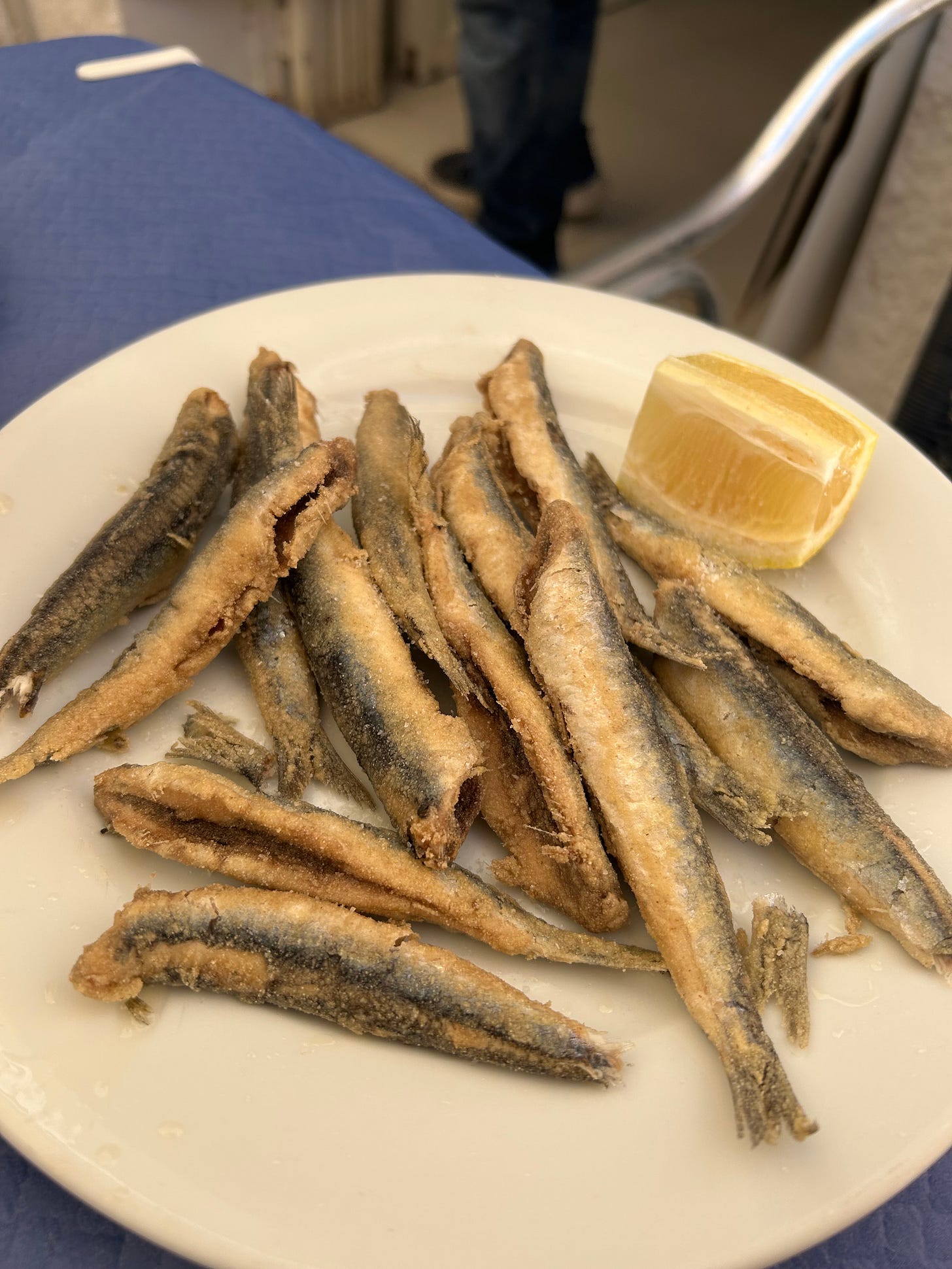The wind is whipping through Tabarca so intensely it feels like it could consume us all. Normally, I hear the cry of seagulls, the hum of Spanish chatter, and the call of ferries coming and going from the tiny, overcrowded port. But today, the wind has taken over, powerful and relentless.
Getting to Tabarca is a whole trámite. There’s no full-service supermarket on this little speck of an island, so we plan ahead. After taking the high-speed train from Madrid to Alicante, we make a critical stop at Mercadona, about a nine-minute walk from the station. We've come semi-prepared with a Quechua cooler bag full of cool packs, a few tote bags, and my half-empty Carhartt backpack to haul our provisions.
I do a proper shop: cold cuts, milk, sliced cheese, pasta, hamburger patties, lettuce, tomatoes, tortillas, tuna, canned olives, boquerones, all the essentials. We skip bottled drinks because they’re too heavy, and I forget the ketchup and frozen fries. Oops. But I score some perfect avocados from the frutería on the same street as the Mercadona, which sort of makes up for it.
By 11 a.m., we hustle down to the port. The boat doesn’t leave until noon and takes an hour to reach the island. I stop by a nearby Carrefour Express, which is useless for frozen fries or longaniza, but I do find ketchup and a pack of generic chocolate cookies. We also find a rest stop at a café with a shady terraza, and I sip a much-needed agua con gas before the ferry.
By boarding time, most of the indoor seats are already taken. John asks a friendly Spanish family playing cards if we can sit with them. They say yes, and we end up having a great chat about Tabarca. The sea smells like salt and brine and sun. It takes me back to the first time I swam in the Mediterranean. I grew up next to the Pacific, where the ocean was cold, dangerous, full of riptides and undertows. Here, the water is calm and clear and perfect for snorkeling. I swim for hours with my mask, exploring rocky beaches and caves hidden in crevices along the coast.
In the height of summer, the island gets packed. It’s hot, humid, swarming with tourists and day-trippers. Kids come in packs, and with the crowds comes litter. I’m not sure the ferry companies care how absurdly full the island gets in August. Round-trip tickets cost around €8–10 which is cheap enough to bring in hordes of tourists. One year, the sewage line broke from overuse. The restaurants hustle nonstop during high season, then slow down for the rest of the year, when I imagine the few locals who live here settle into a much quieter rhythm.
Still, Tabarca is stunning. Scenic, rustic, it’s really like something out of a movie. If you visit, try to support a local restaurant like Bar Sharky Rafaela. I always order the classic dish gambas al ajillo, and make sure to get a basket of bread to mop up the oil. The boquerones, the tuna steak, the verduras a la plancha, the seafood dishes are all amazing. And tell Ramón and Rafaela that I sent you.
Don’t bother ordering burgers (you’re on an island, after all), and please don’t litter. You can spend hours snorkeling, diving, wandering the rocky coves, and find yourself in another world.
This morning, the church bells were ringing. We played with the nephews, swam at a beach that was both sandy and rocky. It felt like summer had truly arrived. The days move slowly here. We buy jugs of water since the tap tastes odd. I handpick perfectly plump cherries from Comestibles La Habana. I make two plates of Gildas—those briny, spicy skewers of anchovies, guindillas, and olives. They’re a savory vinegary and perfect little bites. It’s such a simple appetizer, but affordable, easy, and full of flavor.
I watch the cats roaming outside their tiny grey house, built by the local cat lady who stops by every evening with food and water. We snorkel at the tip of the island and find two starfish.
During our last evening swim, the sea felt like it was storming from underneath. Visibility was low, so instead of going out far, we wandered into the tidal pools. I sat in the pools while John brought me seashells and bits of seaglass. We waited to dry off, watching the sun set into the mountains.
As we walked back, we crossed through thick banks of seaweed, the kind that form floating bridges in the shallows. People sitting along the rocks watched us sink and wade through them—it felt like something from a dream. I wish we’d captured it on camera. I just remember laughing as I sank into the seaweed bridge.
I always look forward to returning to Tabarca. It’s the place where I turn into a mermaid, lounging on the rocks, my hair salty and tangled, my skin warm from the sun. I spend the days walking around town with my camera, collecting shells, swimming, snorkeling, and watching the sea. You can spend so many afternoons just staring at the water.
If you ever visit Tabarca, be kind to the island: support local restaurants, pick up your trash, and take only your memories and seashells (but not the starfish). Every year I return, and every year Tabarca reminds me: the slower you go, the more you see.
And with that, this will be the final post as we head into August. I’ll be taking a break on posting and spending the time journalling and traveling. Thanks for reading.


